Analysis of research trends regarding COVID-19 and creativity
Main Article Content
This study integrated COVID-19 and creativity into the literature through knowledge mapping visualization, to promote existing academic results and provide a reference value for subsequent research. Accordingly, we analyzed the distribution of the literature on COVID-19 and creativity, research hotspots, and representative groups of authors. We found that the topic of COVID-19 and creativity has sparked interdisciplinary research, leading to cross-disciplinary and cross-national collaborations. Creativity can be used to cope with the challenges and social complexity brought about by COVID-19. The law of theme development in the existing literature was divided into three stages: exploratory (2020), active (2021), and stable (2022). Our findings indicate that the upsurge of research on COVID-19 and creativity may slow down, but that models, intention, energy, life, benefits, space, and music are likely to be themes for future research.
Method
Data Sources
We entered “COVID-19” and “creativity” as search terms in the Science Citation Index Expanded, Social Sciences Citation Index, and Arts & Humanities Citation Index core datasets on Web of Science. Theses, review papers, online publications, and conference papers were selected for the article types, and 2020–2022 was set as the time span. On the search date of February 3, 2023, we obtained 587 relevant articles. The initial search identified 621 articles, but after importing them into the bibliometrix program in the R language package, 34 articles were automatically screened out due to incomplete information, unrecognizability, or different machine algorithms. The removal of these 34 articles did not seriously bias the study results.
Tools
We processed the data using the bibliographic cooccurrence analysis system (BICOMB) and the following scientific knowledge mapping tools: bibliometrix, graphical clustering toolkit (gCLUTO), and VOSviewer. BICOMB was used to perform data cleaning as well as format preprocessing of the 587 collected studies. The general distribution profile of the literature and hot topic analysis were performed using bibliometrix and VOSviewer, developed by Aria and Cuccurullo (2017). We used gCLUTO, developed at the University of Minnesota, USA, to cluster the high-frequency author groups and to analyze the research themes of high-frequency authors using the bidirectional clustering function.
Procedure
There were four stages from data collection to visualization and analysis, as shown in Figure 1.
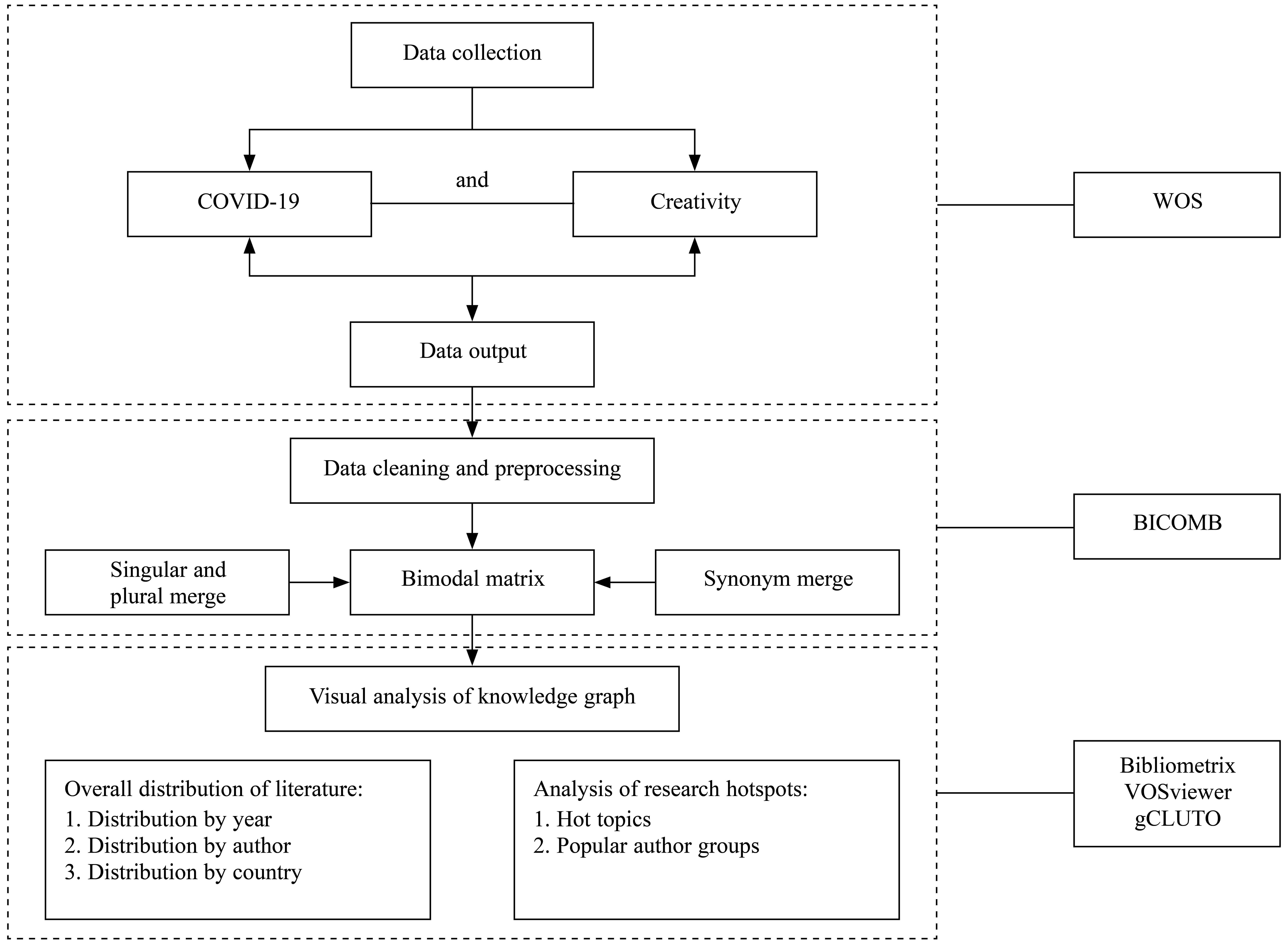
Data Cleaning and Preprocessing
BICOMB software was used to complete the singular and plural merging and synonym merging. The specific operations were as follows: “COVID-19,” “COVID-19 pandemic,” “pandemic,” “coronavirus,” and “pandemics” were unified into “COVID-19 pandemic”; and “collaboration” and “teamwork” were combined into “collaboration.” After cleaning, the keywords were transformed into this format, and keywords with more than five occurrences and authors with more than three occurrences were selected and expressed in the form of a two-mode matrix in preparation for data analysis (see Table 1).
Table 1. Author–Keyword Bimodal Matrix

Overview of the Overall Distribution of the Literature
Descriptive data were extracted using bibliometrix and VOSviewer. To obtain a general overview, the COVID-19 and creativity studies were visualized by year distribution, author collaboration distribution, and country collaboration distribution. The co-occurrence parameter of the national cooperative network of VOSviewer was set to more than 5 times, the method was set to LinLog/modularity, attraction was set to 2, and repulsion was set to 0.
Analysis of Research Hotspots
We conducted a visual analysis of the general overview of articles and the evolution of topics using bibliometrix. Clustering analysis of high-frequency author clusters was conducted using gCLUTO software. The clustering method of gCLUTO—specifically, the hill plot parameter setting—was chosen for repetitive dichotomy, and the cosine function was used for similarity calculation. We selected optimal clusters according to the content of the literature, and, finally, divided the high-frequency authors into five clusters.
Results
General Overview Analysis of the Literature
Distribution by Year
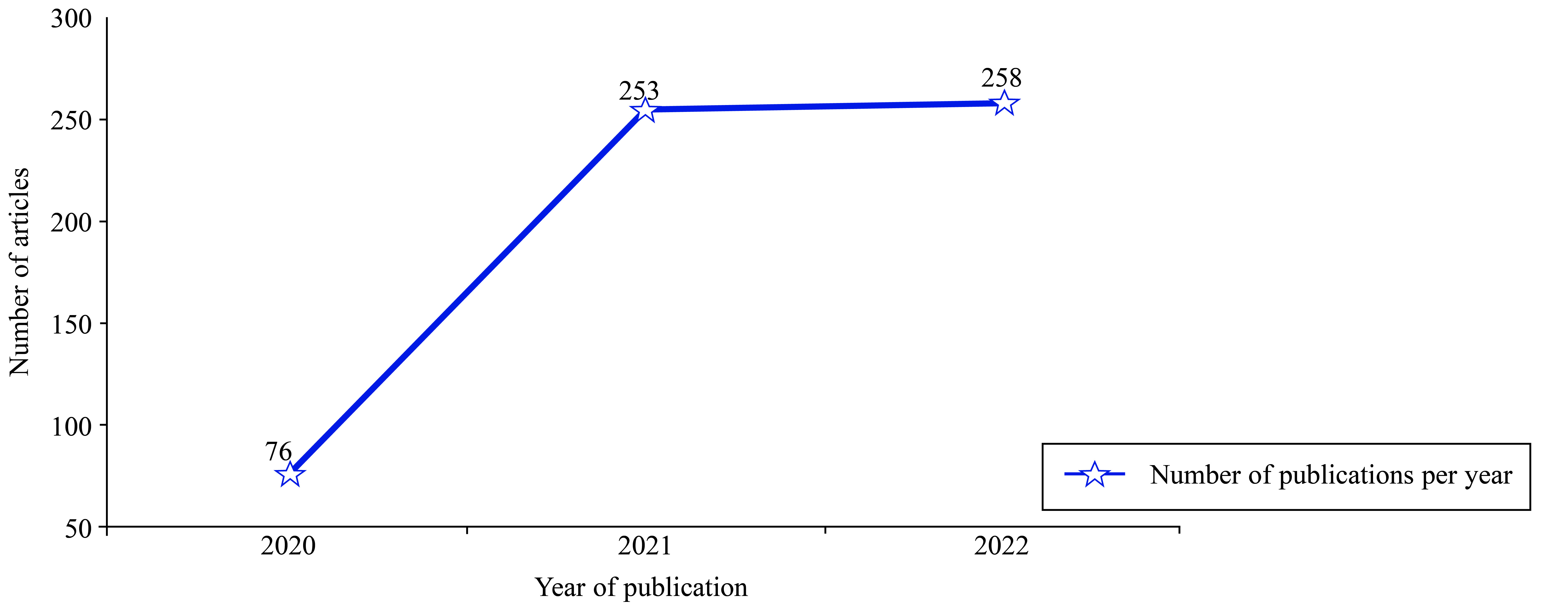
Figure 2. Annual Statistics for Article Numbers and Year of Publication of the Literature
Distribution by Author
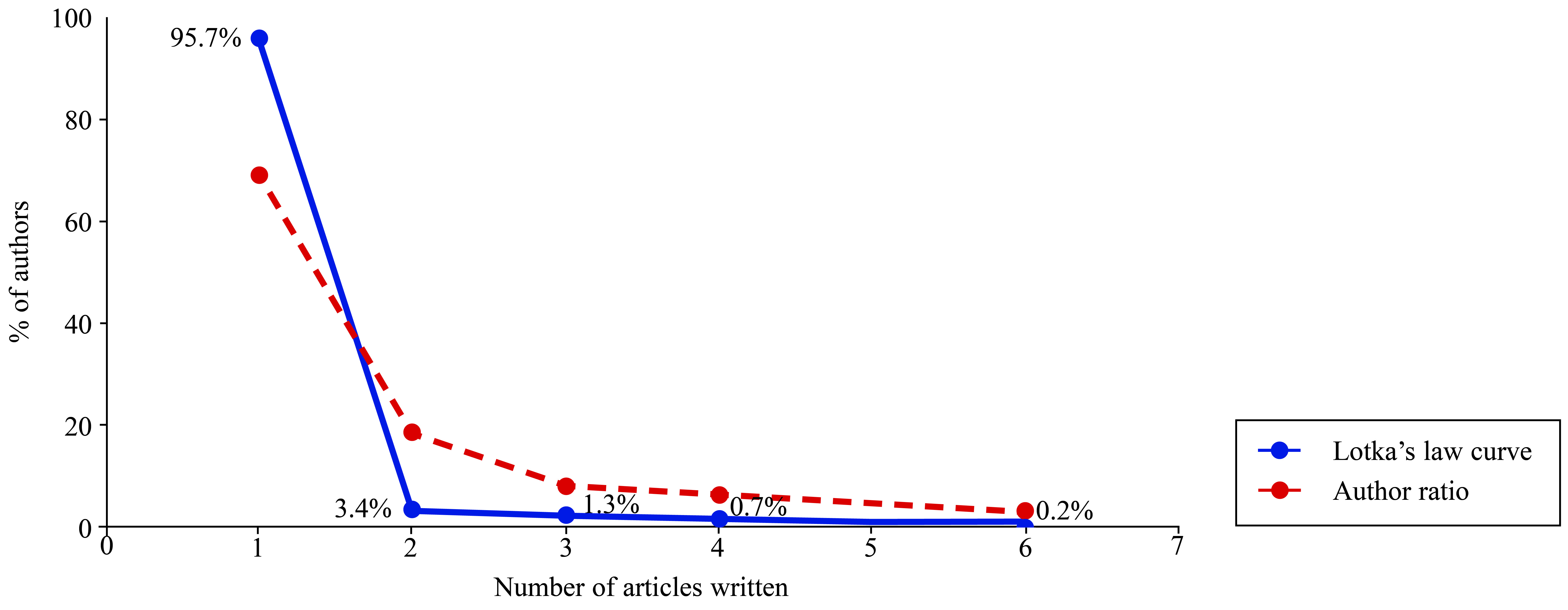
Figure 3. Lotka’s Law Distribution Diagram of Authors
Distribution by Journal
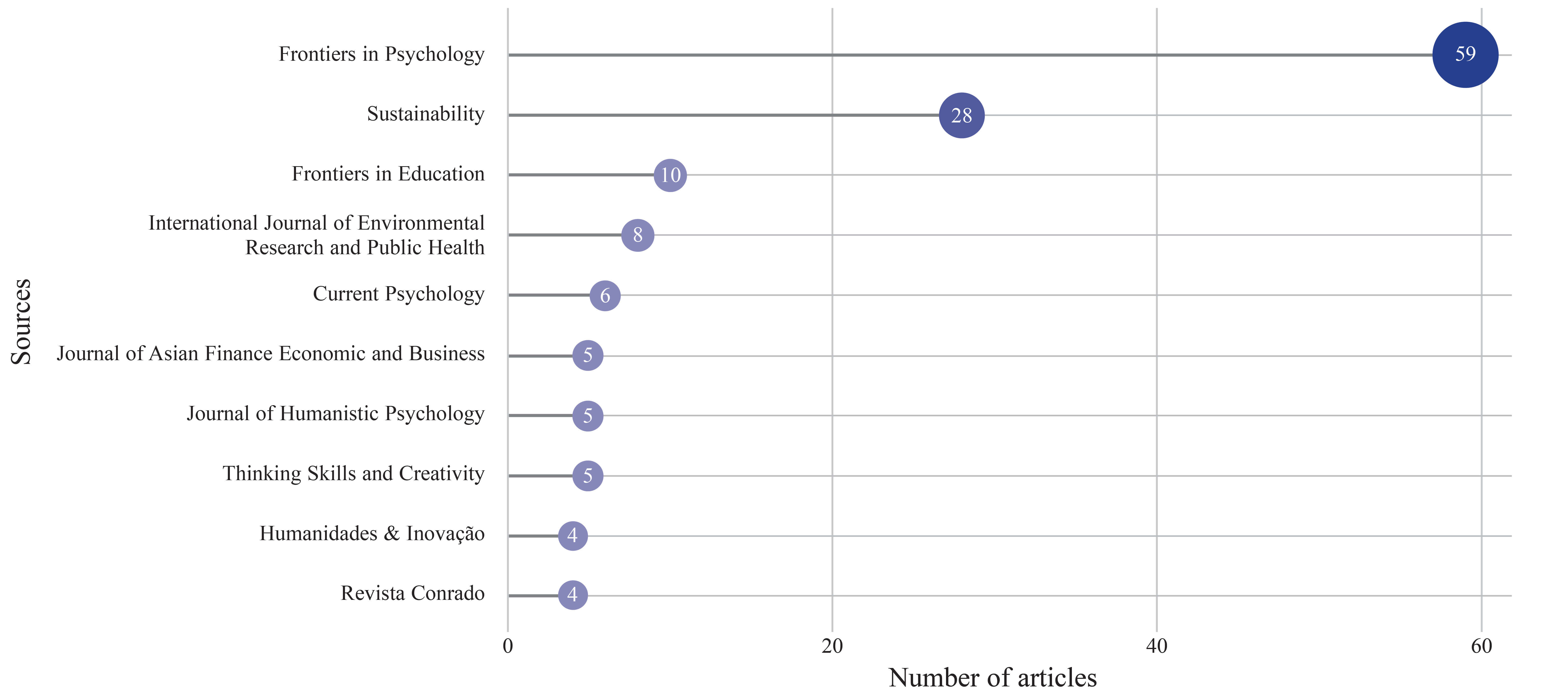
Figure 4. Distribution of Source Journals
Distribution of Cooperation by Country
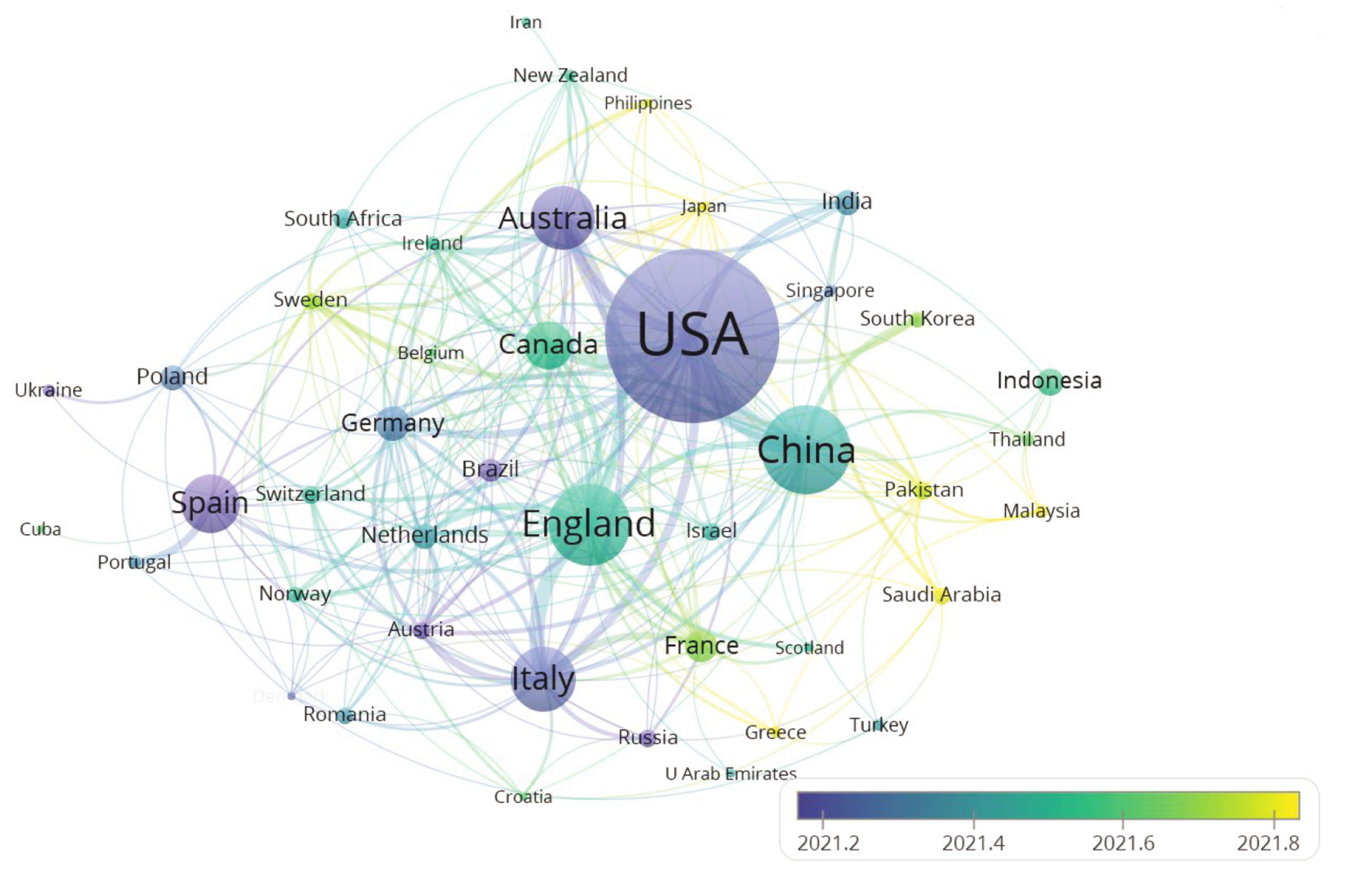
Figure 5. Distribution Map of Country Cooperation
Figure 5 shows the distribution of country cooperation; the size of the nodes is proportional to the frequency of country appearance. The figure shows that the United States, China, the United Kingdom, Italy, Australia, Spain, and Canada were the countries with the highest research output in creativity and the main contributors to this research area. Among these countries, 153 articles were published by authors from the United States, indicating that this country is a world leader in research on creativity. China took second place, with 72 articles, followed by the United Kingdom (65 articles), Italy (50 articles), Australia (49 articles), Spain (45 articles), and Canada (36 articles). Most of these are English-speaking countries, which indicates the value these countries place on the study of creativity. In addition, the United States and China were the countries with the highest number of collaborations, at 16 apiece, followed by the United Kingdom and Italy, with 10 each.
In addition, the purple color nodes in the graph indicate that the United States, Australia, Spain, Austria, and Brazil were the first to focus on pandemic development and creativity. The yellow nodes indicate that Malaysia, Philippines, Japan, Pakistan, Saudi Arabia, and Greece were the most recent to publish studies of COVID-19 and creativity.
Hot Topics
Theme Evolution Analysis
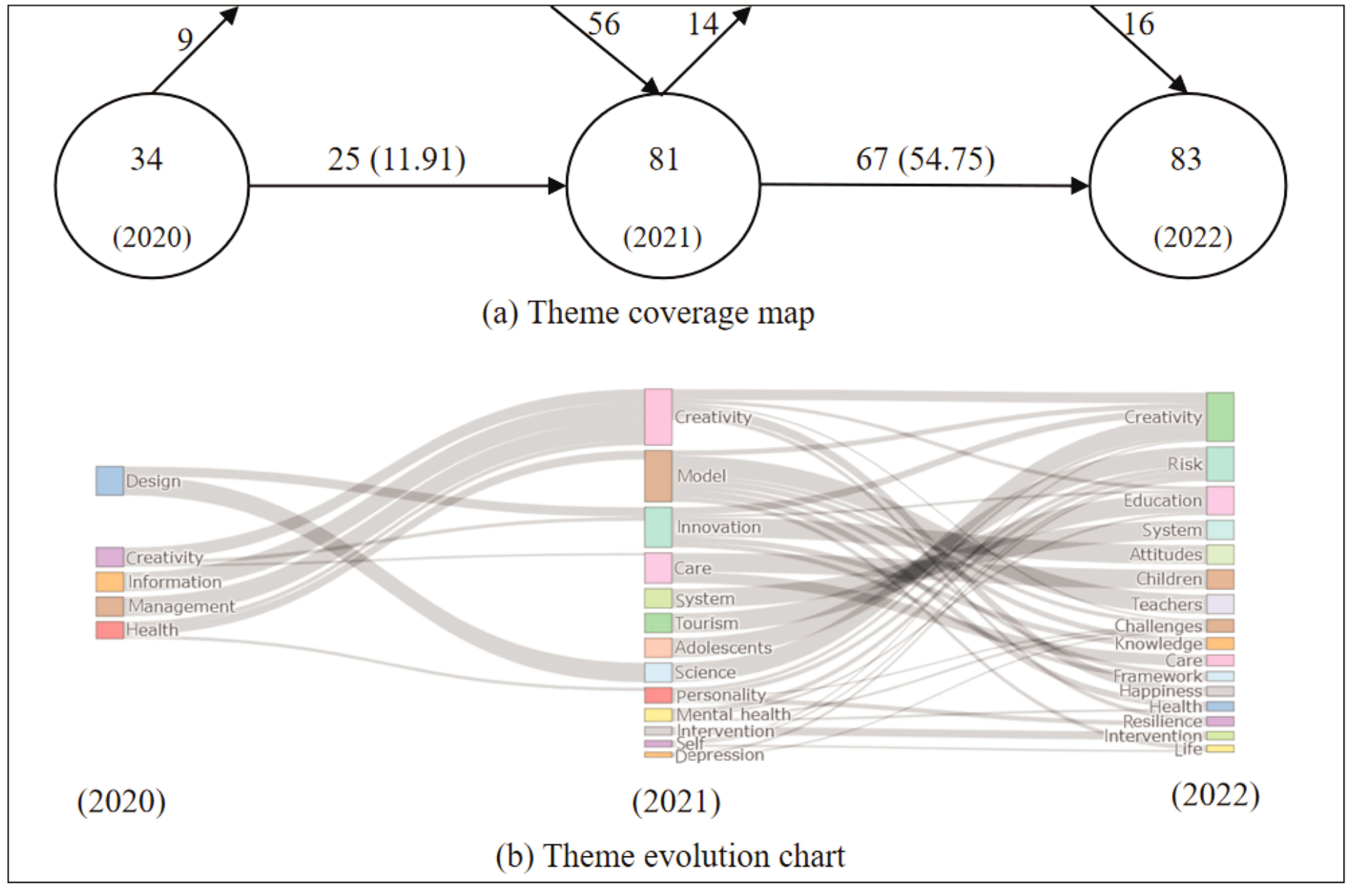
Figure 6. Thematic Evolution of COVID-19 and Creativity Research
Figure 6 shows the dynamics of the research area in terms of the succession of thematic evolutionary paths. The three circles from left to right represent the three development stages of 2020, 2021, and 2022. The implanted arrows on the circles represent the number of new topics. The pointing arrows indicate the number of topics that were not continued after the previous phase. The horizontal arrows represent the number of topics retained from the previous stage to the next stage. The numbers in parentheses are subject stability indices.
According to the information presented in Figure 6(a), the number of themes increased from 34 to 83 over the 3-year period since the first study. During this period, 72 new topics were added each year, and 23 topics were discontinued each year. The number of new topics exceeded the number of extinct topics, indicating that the research literature is growing and that the topics are rich and diverse. The stability index increased from 11.91 to 54.75, indicating that the mid-term studies were more active, whereas the later studies were more stable; further, most of the themes could be effectively continued and the overall development showed a steady growth trend.
From Figure 6(b) we can see that the main themes in 2020 were “design,” “creativity,” “information,” “management,” and “health,” representing fewer categories and a small rectangular area, which means that researchers were still exploring creativity at this point in time. The number of themes in 2021 increased significantly compared to the previous period, and most of them were new. Among them, the rectangle of creativity not only increased in size but also absorbed the three themes of information, management, and health from the previous period. The first phase of “design” was divided into the themes of “innovation” and “science” in this phase. In addition, the theme of creativity in the first phase was also involved in the study of innovation. The research themes in 2022 were similar to those in the previous periods in terms of both the number of studies and the degree of innovation, and almost all of them were carried over and evolved from 2021, which is consistent with the results reflected in the theme coverage map. In this period, in addition to creativity the themes of “risk,” “education,” “children,” and “teachers” accounted for a larger proportion of the topics represented, indicating that most of the research on creativity was focused on the field of education.
In summary, COVID-19 and creativity research has gone through three phases: exploration period (2020) → active period (2021) → stable period (2022).
Strategic Coordinate Analysis
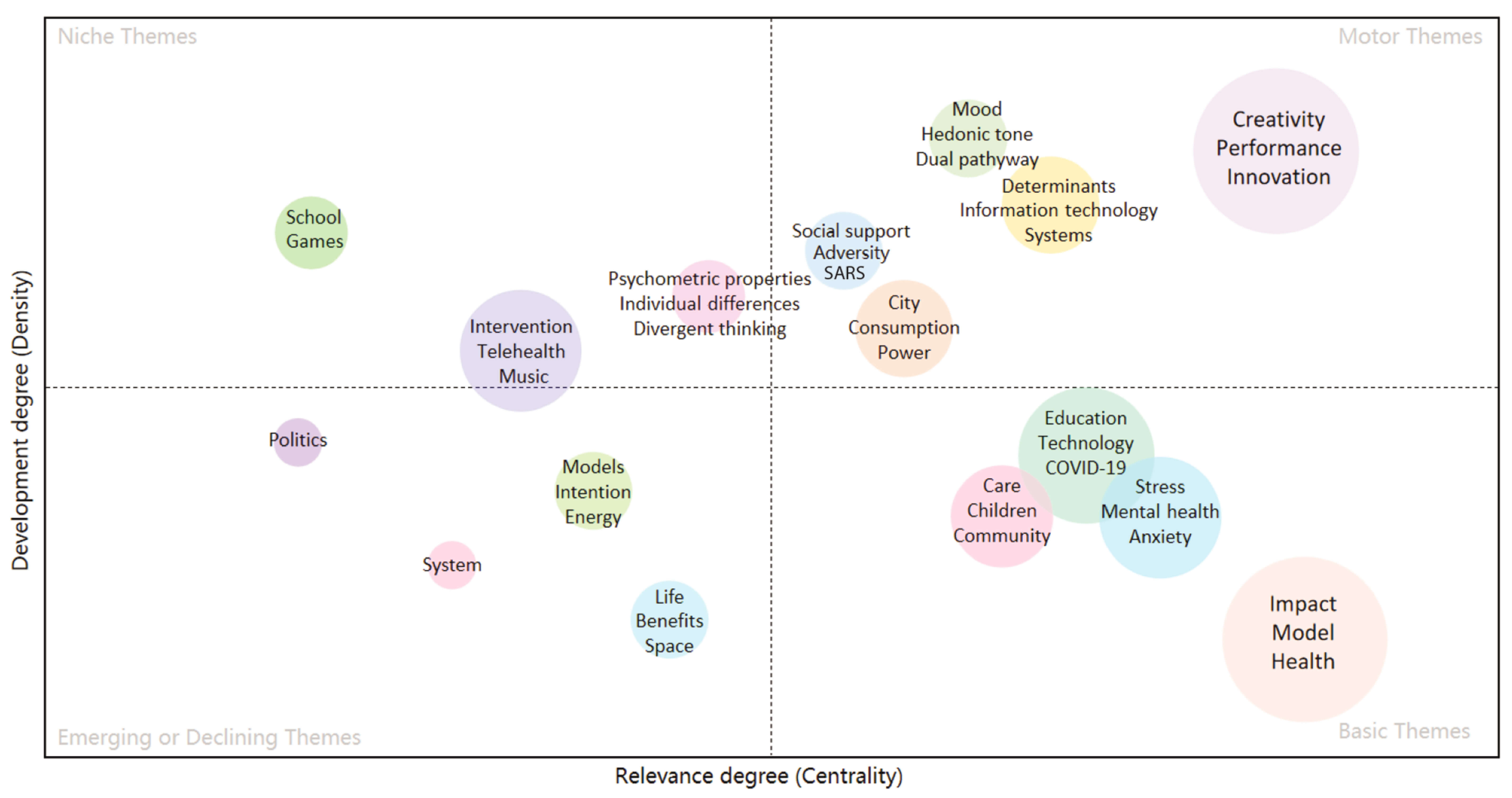
Figure 7. Strategic Coordinate Map of COVID-19 and Creativity Research
Figure 7 shows the strategic coordinate diagram we constructed to show the degree of development of each theme. The nodes of different sizes in the figure represent different clusters, the words inside the node are the internal topics of the cluster, and the number of studies is proportional to the size of the nodes. The vertical axis is centrality, which represents the closeness of the connection between different topics and reflects the status of the topic. The horizontal axis is density, which represents the degree of association of keywords within the topic and reflects the maturity of the topic development.
There are four quadrants in Figure 7. The upper right quadrant represents the motor area, where theme development was more prosperous, received more attention, and has the ability to evolve in the future. The nodes of “creativity,” “performance,” and “innovation” occupy the largest area, indicating that many articles on this topic occupy an important position in the research field. “Mood,” “hedonic tone,” and “information technology” themes are also located in this area, indicating that these themes are well developed, have the strongest links to other themes, and have been the most popular over the last 3 years.
The lower right quadrant represents the basic area, where the theme is well developed but not highly visible. The size of the nodes shows that the number of articles on “impact,” “model,” and “health” topics is relatively high, along with the themes of “education,” “stress,” “mental health,” “anxiety,” and “children.” This indicates that these themes have matured after 3 years of research, attention has started to decrease, and new themes may be derived jointly with other themes in future research.
The upper left quadrant represents the niche region, where topics are highly visible but underdeveloped. The node area of “games” and “school” is small and has the smallest density value, but the centrality is high, which indicates that the few papers on these topics have received some attention, and there is still potential for further exploration.
The lower left quadrant represents the emerging area, in which the theme is weak, underdeveloped, and underappreciated, which could indicate either an emerging or declining trend. The topics of “models,” “intention,” “energy,” “life,” “benefits,” “space,” “system,” “politics,” and “music” are located in this area and have the lowest density value, which means that the vitality is weak and the connection with other topic words is loose and currently underdeveloped. On the basis of the sizes of the studies and the sustainability of the topics, “politics” and “system” are likely to be declining topics, while the others are likely to be trending topics in the future.
Hot Authors Group
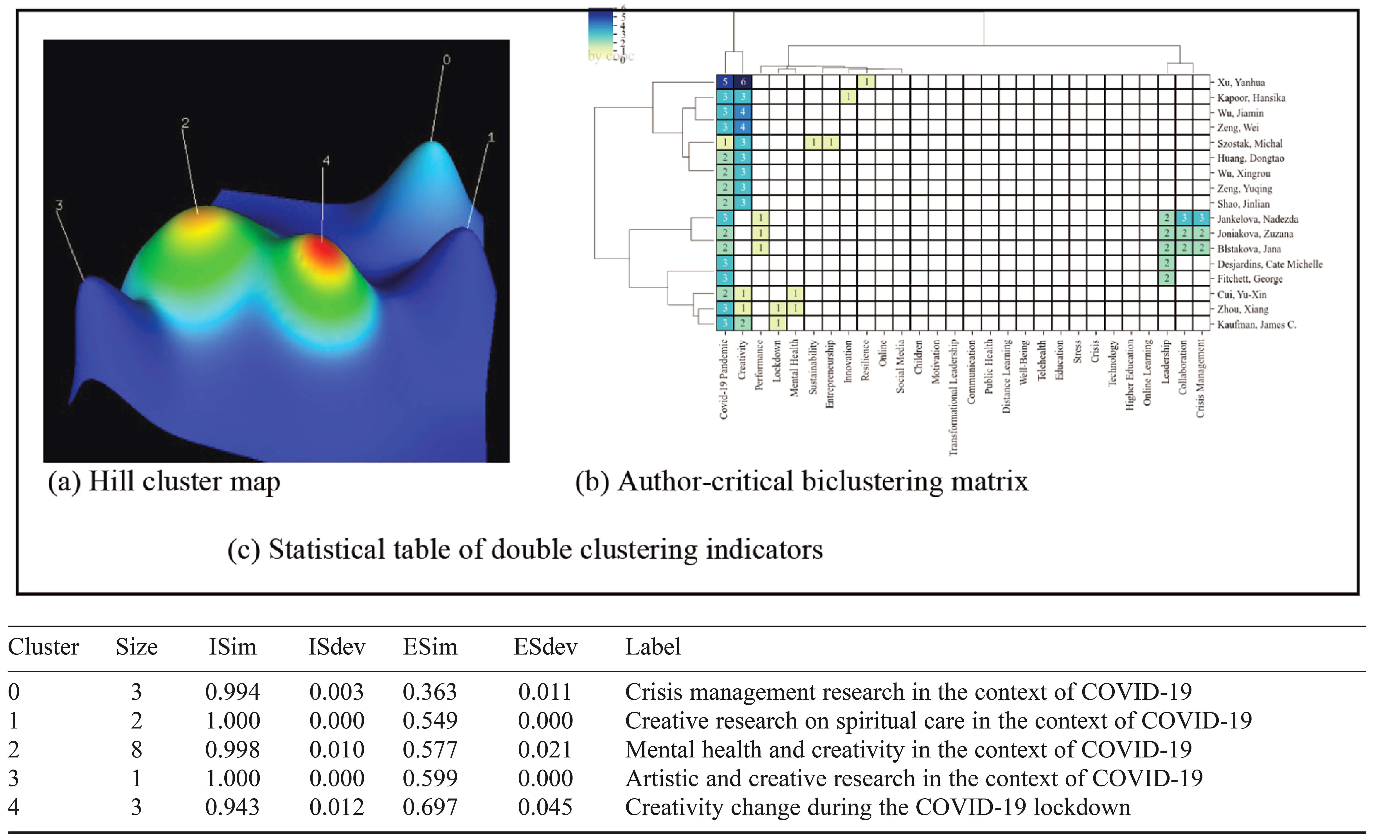
Figure 8 shows the clustering of authors based on keyword relevance. Each hill in Figure 8(a) represents a cluster, and the volume, height, color, and position of the hill correspond to the information in the clusters. The volume of the hill is proportional to the number of cells contained within the cluster. The height of the hill is proportional to the intraclass similarity, and the higher the hill is, the more similar are the types of information contained within the clusters. The color of the summit is inversely proportional to the intraclass standard deviation: the warmer the color is, the lower the intraclass standard deviation; the cooler the color is, the higher the intraclass standard deviation. The location of different hills is inversely proportional to the interclass similarity: the further the distance is, the smaller the interclass similarity, and the closer the distance is, the greater the interclass similarity. Figure 8(b) shows the visual matrix of the double clustering of authors and keywords, showing the author clustering, keyword clustering, and the focus of the different author studies. The number inside the rectangle represents the number of times the corresponding author and keyword appear together; the higher the number is, the darker the color. Figure 8(c) shows the basic information of hill clusters, and indicates that the intraclass similarity of all clusters is greater than .90 and the intraclass standard deviation is less than .10, which indicates that the clustering effect is trustworthy.
We analyzed the research hotspots of the different author groups in Figure 8. Cluster #0 was composed of three Slovak researchers. In addition to the keyword of “COVID-19 pandemic,” the core terms of this research group were “performance,” “collaboration,” “leadership,” “crisis,” and “management.” Reading the internal articles, we found that the cluster was focused mainly on crisis management, with information management and team sharing as the entry points for analyzing medical, agricultural, and corporate management. Cluster #1 contained two American researchers with the core keywords “COVID-19 pandemic” and “leadership,” and the publication category was religion and service. By reading the internal articles, we found they had published mainly creative research on spiritual care in the context of the pandemic, exploring the creativity of caring leaders. Cluster #2 was composed of eight Chinese researchers and included the search terms “creativity,” “resilience,” and “innovation” in addition to “COVID-19 pandemic.” These articles were published in the category of psychology and psychiatry, with content relating to the study of mental health and creativity. The relationship with creativity was analyzed from the perspectives of depression, isolation, posttraumatic growth, negative emotions, psychological resilience, and self-efficacy. The only Polish researcher within Cluster #3 was Szostak, who used the core terms of “sustainability” and “entrepreneurship” in addition to the theme words, and published in the business and economic research category. These articles mainly explored the identity crisis of artists during the pandemic and analyzed the difference between artistry and creativity in the context of social sustainability. Cluster #4 comprised three researchers, two of whom were Chinese scholars and one of whom was American. The top color of this cluster is red, which means that the standard deviation within the cluster is very low, and the core keywords involved are “lockdown” and “mental health.” All the articles in this cluster were published within the psychology discipline. The content of the articles shows that this group of authors mainly studied changes in creativity levels during the COVID-19 lockdown and how creative behaviors could alleviate anxiety or improve mental health. In addition, the hill map shows that Hills #2 and #4 are connected and located close to each other, and by reading the internal literature we found that the articles in these two clusters partially overlapped and belonged to the psychological discipline.
Discussion
Main Conclusions
We integrated the literature of COVID-19 and creativity through knowledge mapping visualization, sorted and mined the overall distribution and thematic development of the literature, and came to the following main conclusions: The topic of COVID-19 and creativity is generating interdisciplinary research, which has led to cross-disciplinary and cross-national collaborations. The results of this study show that research on COVID-19 and creativity has generated a high level of interest in the fields of education and psychology but also in other fields, such as economic management, art, and medicine, with different levels of research and cooperation originating in different countries. Researchers in various fields in different countries are becoming aware of the role that creativity can play in addressing the challenges posed by the pandemic (see, e.g., Čábelková et al., 2022; Kapoor & Kaufman, 2020). This allows for a more comprehensive and nuanced approach to the study of creativity in a pandemic context and a better understanding of the complex relationship between COVID-19 and creativity. However, it is important to note that less than 5% of the authors have published more than two articles. This reflects, in part, that the study of COVID-19 and creativity is an emerging field that has received attention from scholars around the world, but most researchers have only scratched the surface and more research is needed to fully understand this relationship. Overall, the interdisciplinary nature of COVID-19 and creativity research underscores the importance of cross-disciplinary collaboration and cross-regional knowledge sharing.
Research on COVID-19 and the thematic development of creativity has gone through three stages: exploration period (2020) → active period (2021) → stable period (2022), each with its own development characteristics and focus. The development of themes in the exploration period (2020) is characterized by a small volume of literature and a small variety of themes, suggesting that research on creativity in the context of pandemics was still in a preliminary stage of development in 2020. The total volume of literature in the stabilization period (2022) has grown slowly, with a high overlap of topics with the previous period and no new additions, indicating that most of the studies were building on previous studies. With regard to the focus of attention at each stage, at the beginning of the pandemic more attention was given to the impact of changes in the survival environment on the development of creativity (e.g., teleworking and online learning) and to the moderating function of creative activities on mental health. At later stages more attention was given to the development of creativity itself, with research focusing on the relationship between the enhancement of creativity and other psychological factors.
The research focus on COVID-19 and creativity may slow down. The results of this study show that although the volume of literature continues to increase, the growth rate has slowed significantly, and the development of the topic has stabilized. This is because as life under pandemic conditions becomes normalized and the social order recovers, the focus of research may shift to other areas, such as the long-term social impact, how such pandemics affect the use of technology in the creative field, and how it changes the way creative workers such as artists and designers approach their work.
Creativity can be used to cope with the challenges and social complexity brought by COVID-19. We analyzed the data and found that the works of the most influential groups of authors in this field can be divided into five categories: Crisis management research in the context of COVID-19, creativity research in spiritual care in the context of COVID-19, mental health and creativity research in the context of COVID-19, artistry and creativity research in the context of COVID-19, and creativity change research in the period of the COVID-19 lockdown. Different clusters have different research hotspots. Cluster #0 relates mainly to medical management, agricultural management, and corporate management. In Cluster #1 most of the internal literature belongs to the category of religious services, and the research focuses on the field of spiritual care. These two clusters relate to the effects of social isolation and stress on creative thinking, the effects of remote work on creative collaboration, and how spiritual care by leaders enhances employee creativity. Cluster #2 has a larger volume and contains the largest number of authors, and #4 has the lowest standard deviation. The clustering distance between Clusters #2 and #4 is the closest, and the similarity is high. They belong to the same field of psychology, which focuses on changes in the level of creativity during the pandemic and the relationship with mental health. Cluster #3 is the smallest, with only one author, and it focuses on the impact of the COVID-19 pandemic on creative expression and production, such as how the pandemic affected artists and creatives, the types of creative work being produced, and the creative process. The results of these studies show that research in this field has covered all aspects of people’s lives, reflecting the diversity and complexity of modern society, and indicating that creativity can effectively address these challenges.
In conclusion, research on COVID-19 and creativity has generated global interest due to the significant impact of the pandemic on people’s lives, work, economic considerations, and social activities, requiring creative responses to challenges and the generation of new solutions. Both individuals and organizations need to respond to the uncertainties of the pandemic through creative approaches such as emerging business models, teleworking technologies, medical devices, treatment options, educational innovations, and psychological barriers. Meanwhile, the pandemic has provided an opportunity for creativity to develop, leading to an awareness of the importance of creativity in responding to emergencies.
Theoretical and Practical Implications
This study combined creativity with the social background of COVID-19 and comprehensively analyzed the research trends since the outbreak of the epidemic, which is of great theoretical and practical significance.
At the theoretical level the analysis of research trends in creativity as a psychological category will improve the theoretical system of creativity, promote the scientific process of creativity research, deepen the development of the field of psychology, and help psychology researchers better understand the nature and influencing factors of creativity. Trend analysis of studies revealed that even negative situations (e.g., social lockdowns caused by the epidemic) can be a stimulating factor for creativity, which provides new insight into creativity and improving creativity theory in the future. It also provides a reference direction for future theoretical research. From our study, psychologists can gain a comprehensive understanding of the hot topics in the field and the extent to which these topics are developing, which will allow them to make predictions about future research and help subsequent researchers to choose more valuable research directions.
At the practical level, the study of COVID-19 and creativity trends can have a positive impact on individual and social spheres. COVID-19 has posed an unprecedented challenge to the world, and since the outbreak the field of psychology has begun to study COVID-19 and creativity, and then gradually extended to the fields of education and economics, indicating that the topic of creativity is generating varying degrees of interest in various fields. By synthesizing the existing studies and summarizing the thematic development patterns, we can gain insight into the aspects and perspectives of creativity in the context of COVID-19, and what role creativity plays in the epidemic. This allows for analyzing changes in people’s mental health status in the epidemic environment from a psychological perspective, offers insights for mental health workers (e.g., enhancing creativity in the process of psychotherapy to restore mental resilience and self-regulation), and also provides new ideas to help people solve real-life problems creatively. From the perspective of social significance, this can alleviate psychological problems caused by lockdown and the economic downturn, and provide certain practical enlightenment for national policymakers.
Limitations and Future Research Directions
There are limitations in this study. For data collection we used only the Web of Science core database, and the number of included studies was limited to ensure the completeness of the data, which may have affected the accuracy of the results. For example, if the literature from a particular country has been excluded, the results may underestimate the contribution of that country to the field. Therefore, in subsequent data collection we recommend that multiple data sources be used to minimize gaps in the study area.
In terms of future research directions, our data analysis indicates that models, intention, energy, life, benefits, space, and music could be fruitful avenues for research on COVID-19 and creativity. In the context of work and production, the benefits of combining virtual and reality for small- and medium-sized enterprises (Amuso et al., 2021) and the use of information technology in the workplace could be explored (Junglas et al., 2022). Research could also be conducted on the transformation of enclosed workspaces (Ulusoy & Aslanoğlu, 2022). Another possible starting point is how creativity can be used to stimulate employees’ innovative behavior during COVID-19 (van Essen et al., 2022).
In terms of life, an analysis of how creativity is enhanced during COVID-19 to promote well-being has been conducted (Brosowsky et al., 2022). In addition, the use of physical displacement in enclosed spaces enhances creativity (Apolonio, 2021). Moreover, the use of sex as a form of leisure to cope with negative stress from COVID-19 has been examined (Berdychevsky, 2022). Future researchers could expand each research direction to increase the diversity of content and enrich understanding.
In terms of education, future studies could analyze how students’ creativity is enhanced through online learning models (Biasutti et al., 2022; Juliantine et al., 2022), and how their education progresses in closed family spaces due to COVID-19 (Aznar et al., 2021). Attention could also be given to the role of music and creativity education during the pandemic (Bylica & Bauman, 2022).
Psychological willingness could be analyzed as the direction of willingness to buy (Demsar et al., 2022) and willingness to leave (Sobaih et al., 2022) in the context of COVID-19. In addition, entrepreneurial intentions have been explored (Cater et al., 2022; Uansa-ard & Wannamakok, 2022; Uddin et al., 2022) on the basis of the theory of planned behavior and social cognitive career theory. A focus in future work could be on the moderating effect of art on mental health during COVID-19 (Chmiel et al., 2022).
References

Table 1. Author–Keyword Bimodal Matrix


Figure 2. Annual Statistics for Article Numbers and Year of Publication of the Literature

Figure 3. Lotka’s Law Distribution Diagram of Authors

Figure 4. Distribution of Source Journals

Figure 5. Distribution Map of Country Cooperation

Figure 6. Thematic Evolution of COVID-19 and Creativity Research

Figure 7. Strategic Coordinate Map of COVID-19 and Creativity Research

The data that support the findings of this study are available on request from the corresponding author.
Qi Liu, Department of Education, School of Education, Woosuk University, Jeollabuk-do 55338, Republic of Korea. Email: [email protected]